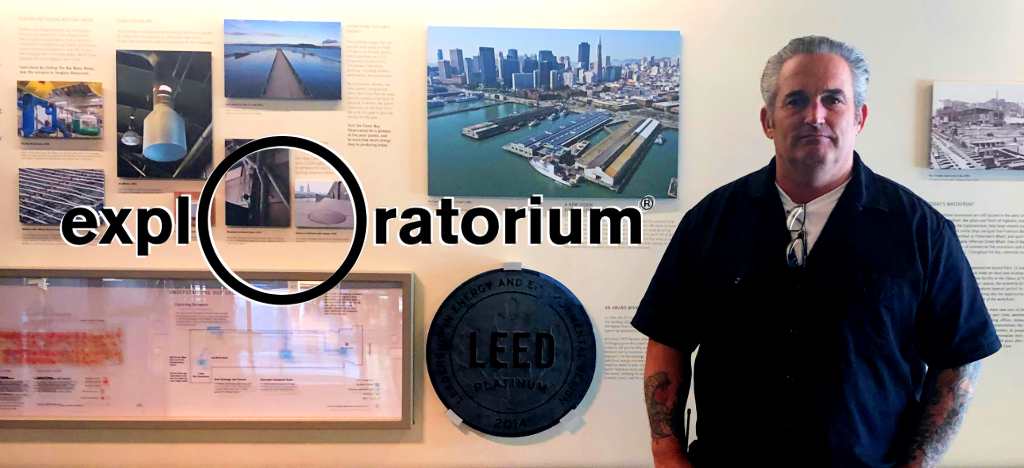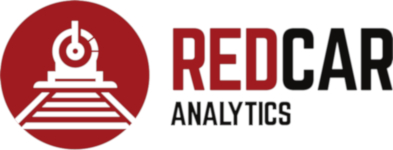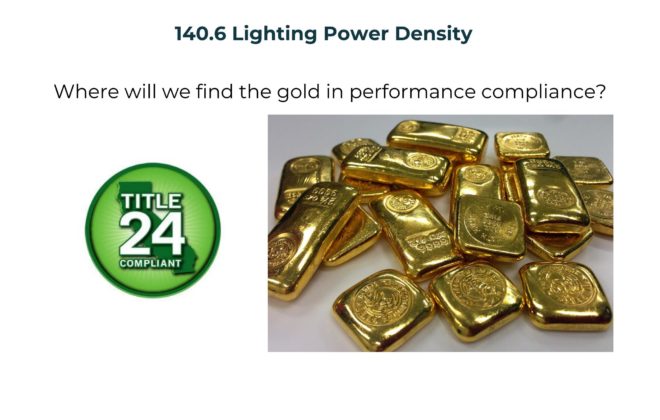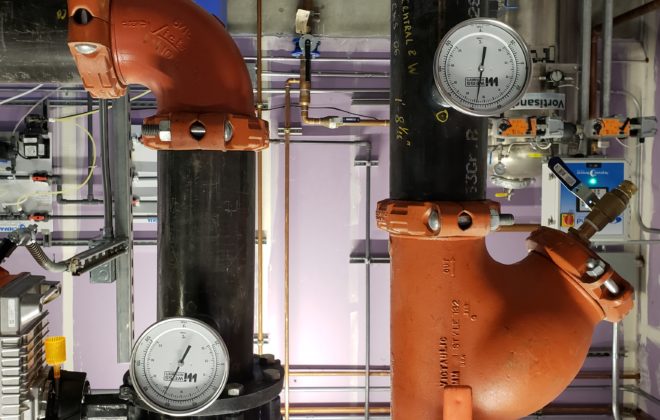
A Journey Towards Zero: Transitioning Zero Energy Designs into Zero Energy Operations

Straight talk with Chuck Mignacco, Senior Manager of Campus Facility at one of the world’s most sustainable museums….. the Exploratorium.
Back in September 2012, the Exploratorium announced its goal to be become the largest zero net energy (ZNE) museum in the U.S., if not in the world. After opening their 333,000 sq ft space on Pier 15 in San Francisco on April 2013 and achieving LEED Platinum certification for Building Design and Construction (BD+C), they set out on their auspicious journey towards zero.
Catching up with Chuck, he told me that the museum has not quite achieved this goal; however, their track record of reducing energy use from one year to the next, over six consecutive years, has put them well on their way to becoming a Zero Energy Museum!
The goal to achieving ZNE can sometimes be a challenge. When the museum was making changes in space usages that weren’t originally accounted for in design, for example allowing for an evening rental space for events, it prompted someone to ask Chuck, “Why don’t we just drop the ZNE goal?” Chuck, in his cheerful way, reminded everyone that “…we make decisions on the maintenance and procedures for this facility based on what would be most efficient and what would drive us towards ZNE. And when we achieve ZNE we still need to continuously fight the fight.”
Another example he shared relates to the Exploratorium’s heating and cooling system which uses San Francisco Bay water for geothermal exchange. Every year the Bay water temperature increases slightly, which results in a decrease in the HVAC system’s efficiency. Chuck and his staff know that their equipment will degrade over time and that drives them to find other ways to offset the efficiency losses.
Chuck shared some additional insights to operating and maintaining an emerging ZNE facility.
What are some of the lessons learned that you could share with architects, designers and owners that could help future ZNE buildings?
We should be designing for the long term, and that requires a Philosophy of Maintenance to be part of the design. We have rules for Egress and Fire Life Safety; yet don’t have any rules that pertain to Maintenance. A high performance building needs to be maintained to remain a high performance building. Equipment needs maintenance on monthly, yearly, bi-yearly schedules; that comes quite often for a building designed to last 100 years. Designing for the long term also means that “If you are placing things that you know people are going to work on, give them a path!” Accessibility is a must, even if at an increased first cost.
What is it like maintaining a ZNE building? What are your challenges? And would you say it takes additional maintenance for a ZNE building vs. a typical building?
Chuck, an avid Harley owner, says, “A high performance building doesn’t mean the same as it does in a sports car.” He believes that if a high performance building is designed well and simple, it doesn’t need as much “wrenching”. In his view, a ZNE building doesn’t require more maintenance than a typical building, but to maintain a ZNE building you ultimately “do” more maintenance than a typical building because you are constantly keeping it tuned to meet a tangible target.
The way Chuck and his team approach maintenance is truly unique and aggressively proactive. They have a software tool that they use to perform daily audits; “It’s like a map that leads an engineer from his desk to every piece of mechanical equipment in the building; where they look, smell and touch.” They maintain for the long run, and this results in less deferred maintenance cost and ultimately saves money.
The maintenance philosophy also revolves around the idea that it is not just “ONE” thing, but a pie chart with 100 different wedges that can encompass each goal. For their 1,250 kW solar array; they knew they weren’t getting the output they should, so they increased the amount of cleaning. After some time, they realized cleaning wasn’t enough, and they installed a bird wire system that helps keep the birds away, and in combination keeps the panels cleaner and results in more solar production.
What is something that would make your job easier?
The maintenance software on the market is still a bit archaic. There isn’t a singular software that encapsulates all the needs of our maintenance team. We find ourselves using many different pieces of software from google calendar, I-Auditor, BMS (Building Management System) and having to aggregate together manually. We are looking for something that is simplified. High performance buildings need a better way of controlling the environment and integrating with maintenance requirements. For example, the Exploratorium’s lighting system is a stand-alone system and, while the maintenances staff is trained and knowledgeable, other staff are not, and this led to many lights being left on 24/7. Chuck’s team worked to create any “Easy” button, or master switch, that could be used by the janitorial and security staff. Now, with the push of one button everything goes to egress lighting.
What challenges have your faced with data management and tracking energy use (ZNE target)?
Too much data! We initially felt the need to measure everything for every minute. We have all these scientists that we thought would dig in and use it, but what we landed up with was 2 Terabytes of data within a couple years. We realized this wasn’t sustainable and drilled down on “What do we really need? What do people actually care about?” Chuck stays with his analogy to driving a sports car … “What do you need to drive the sports car? Typically, don’t need to know how many times you open the trunk, but how about air pressure?”
Another challenge was the integrity of the data. In the Exploratorium lobby, you will find a dashboard that displays their performance and progress. They want to openly share this information to the public. Unfortunately they found that the data wasn’t correct. They ultimately worked to get all meters calibrated and accurate. “If you care, you need exact data, and we should have the ability to get true information.”
“For me the take biggest take away from my conversation with Chuck is that Zero is not an award, or one-time achievement, it is a continuous journey and we need to be persistent.” Michele Sagehorn; Cofounder Red Car Analytics
Michele commissioned the Exploratorium HVAC systems originally in 2011-2012 and continues to follow their journey over the years.




